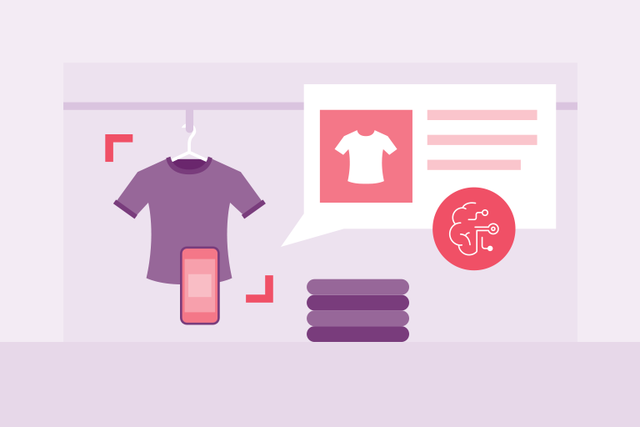Over time, retail has evolved from just a basic exchange of goods to focus on the customer experience. The priority is no longer just a one-time swapping of products for money, it’s ensuring that the customer will come back for follow-up purchases and interactions, increasing customer lifetime value (LTV).
Not only have retail goals shifted, platforms have shifted as well. Retail used to be about brick-and-mortar stores. Companies had to have a physical location to sell their wares. This is no longer the case. With the advent—and increasing presence—of ecommerce, brands can sell their products online and, as a result, reach more customers than ever.
Today, creating one-on-one relationships with a vast customer base involves blending learnings from existing brick-and-mortar locations with data from digital channels to develop a deep understanding of how each customer feels about and engages with your brand. Recently, artificial intelligence (AI) has been introduced to customer data collection processes to better understand customer sentiments as well as tailor content for specific needs.
What caused this technology boom? How does AI work to gather this information?
Let’s get into it.
How the Pandemic Forced Encouraged a Digital Transformation
With COVID-19 requiring businesses to shut their doors and customers to stay home, brands had to find ways, outside of their physical stores, to interact with customers. Digital channels became a higher priority because there was no other option. In order to compete, businesses had to adapt.
On top of being physically distanced from shopping in-store, customers were also dealing with an onslaught of new emotions. Panic and anxiety set in as the pandemic spread. So, in addition to being pushed to use new channels, brands had to strike a delicate balance between traditional marketing messaging and being sensitive to a variety of new, heightened customer emotions.
As a result of these intensified customer emotions and sped-up timelines for digital adoption, new technologies are being introduced to further increase the benefits from digital data collection. AI is being implemented to extract new insights and help brands connect with their customers like never before.
AI Meets Retail: The Details are in the Data
From 2018 to 2022 the investment in AI for retail is expected to increase ~260%. And, according to Retail Customer Experience, “that spend will likely focus on boosting customer service and customer sentiment data.” Retail brands are increasingly implementing AI in their marketing strategies to better understand shopping patterns and behaviors. This allows marketers to draw conclusions about how customers are feeling towards their brand and their overall shopping experience.
Through shopping metrics, demographics and other user data, AI can be used to draw out user sentiments and provide automated aspects to the customer experience that improve user engagement and increase LTV.
Some brands have already seen tremendous success with the introduction of AI. Walmart, for example, increased quarterly earnings by 2.8% after implementing AI. However, it’s important to highlight a huge caveat: AI is not a magic button that will solve all data collection problems. AI is only as good as the data you’re collecting.
Examples of AI in Retail
Automated, Data-Driven Recommendations
While recommendations are nothing new, AI can add more value to personalized recommendations because of its learning capabilities. AI can compile information about individual customers and use that information to make informed recommendations that are based on data and history versus assumptions.
In addition to gathering information about individuals, AI can also categorize data about certain audience segments. Through this process, AI can help marketers identify trends across users within specific segments to identify patterns in shopping behavior.
Why does this enhanced personalization matter? According to a 2017 study by BCG, “Over the next five years in three sectors alone—retail, healthcare, and financial services—personalization will push a revenue shift of some $800 billion to the 15% of companies that get it right.”
Gather Customer Sentiments
Another important aspect of AI in retail, which pairs well with data-driven recommendations, is the ability to understand how customers are feeling towards your brand or product. Sentiment analysis has become an integral part of the customer experience because understanding a customer’s attitude towards your brand can influence what messaging you’re sending them.
Iterable’s Brand AffinityTM , for example, uses AI to gather signals from customer interactions. Then, using that signal data, each customer in the platform is assigned a label: loyal, positive, neutral, negative or unscored. From there, messaging can be tailored to appeal to the brand sentiments for each customer.
Enhancing the In-Store Experience
Brick-and-Mortar and AI are not mutually exclusive. In fact, there are ways in which the two can be combined to enhance the in-store shopping experience. Kroger, for example, implemented smart shelves or “EDGE”—Enhanced Display for Grocery Environment. Not only is this option “greener” than using constantly re-printed paper tags, but these smart shelves allow Kroger to capture product information as consumers shop.
AI is being woven into the holistic customer experience to ensure customers are getting personalized messaging without weighing down marketing and analytics teams. Automation plus data-driven intelligence creates an individualized experience for each customer.
What’s Next for AI in Retail?
With all of this new technology being added to the mix, what’s next on the retail horizon? The lines between sci-fi and reality are increasingly becoming blurred with the introduction of facial recognition. With this technology, brands can gather demographic, shopping and even body language data to determine shopping preferences and brand sentiment.
While AI may seem far-off and futuristic, there are ways you can add it into your marketing stack right now. However, because the possibilities with AI are endless, it’s crucial to implement it in a way that makes sense for your team and your marketing goals.
Adding AI to your marketing stack hinges on understanding what data is available and how that data can be used. AI requires the input of organized, centralized data to draw the right conclusions.
Looking to add AI to your marketing workflows? Iterable can help. Request a demo today!
































